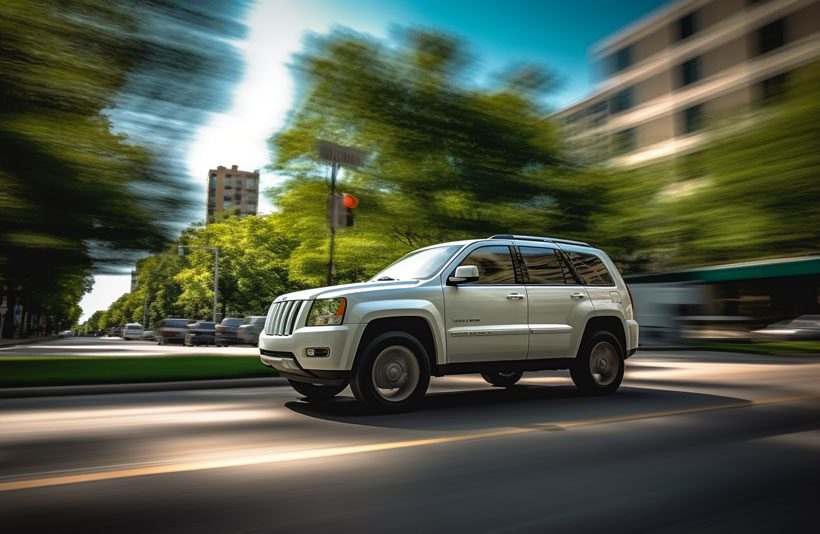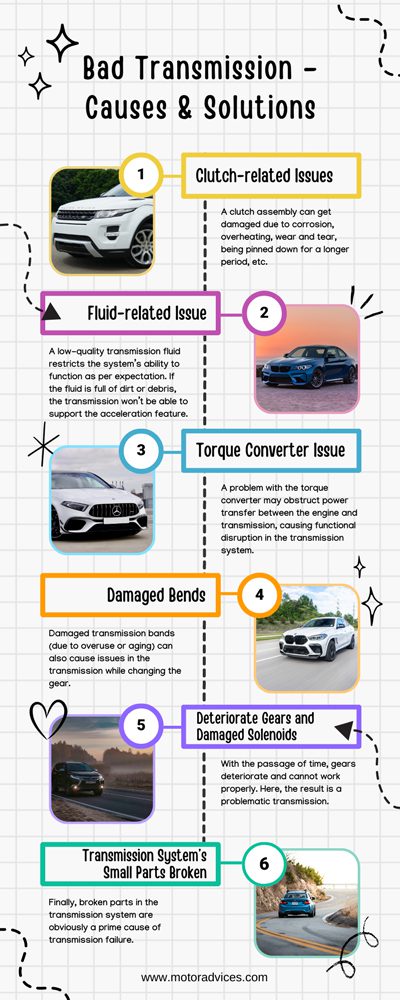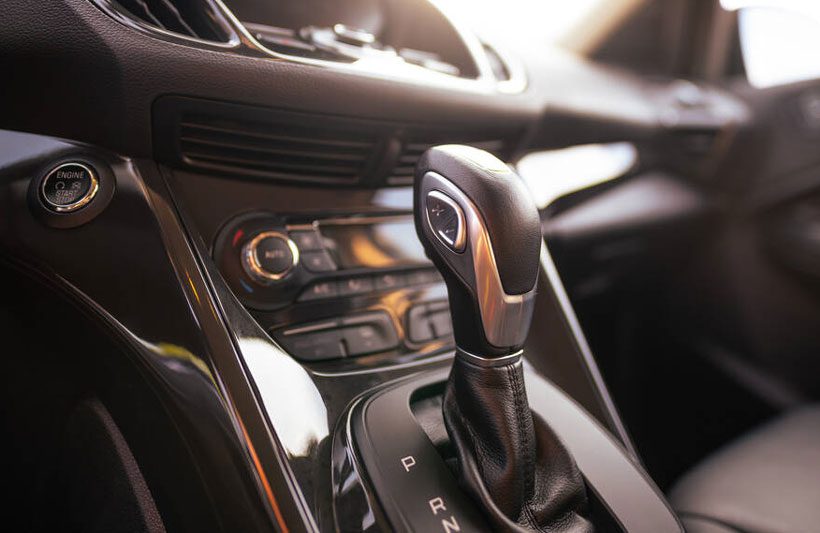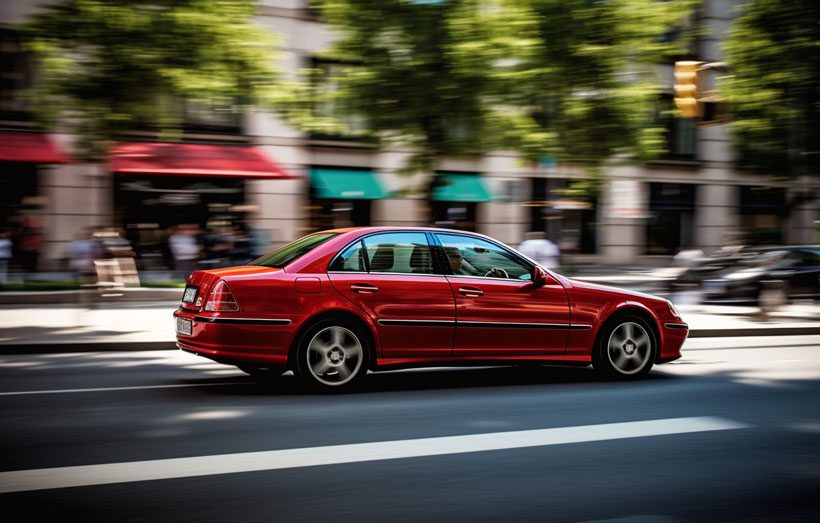Can You Drive a Car with a Bad Transmission?
Undoubtedly, you cannot deny the necessity of a fully functioning transmission in your car. And it is also true that you always cannot ensure such. There are times when you are forced to drive a car with a bad transmission.
So, can you drive a car with a bad transmission? Yes, you can drive the car to finish the onboard journey. But if the journey takes too long, solve the transmission issue immediately to restrict major parts breakdown, accidents, etc.
However, we see many car enthusiasts struggle with this issue without adequate knowledge regarding the reasons, preventive measures, etc. If you also fall into this category, stick with us.
Can You Drive a Car with a Bad Transmission?
Technically, driving a car with a bad transmission is possible. But it is not suggested, as it can be dangerous and cause more damage to the vehicle. Also, you may face difficulties while driving in terms of problems during shifting gears, slipping gears, strange noises, etc.
If you are desperate and have no option but to drive with a bad transmission condition, you should keep in mind that your vehicle may not respond properly while accelerating or braking. It can also cause further damage to other parts of the vehicle, increasing the repair costs.

Considering your inability to go to the mechanic at this moment, we’ve divided the transmission issues into two segments. For the first category, you must not drive, and for the second category, you can drive for a limited distance. Below are the two categories.
Category 01: You must not drive your car with a bad transmission if the issues are clutch problems, damaged converters or bends, and broken small parts.
Category 02: On the other hand, for issues like a damaged solenoid, fluid-related issues, and deteriorated gears, you can drive the car for a smaller distance.
Table: When You Should Drive and Don’t Drive with a Bad Transmission
The table below showcases when you can drive your car with transmission faults and when you should not drive.

Please note, here, the “Drive” term is considered two factors: inability to repair now and shorter distance. It means considering these two factors, you can keep on driving. But, it is always better to address the transmission issue first.
| Transmission Fault Type | Drive/ Don’t drive |
|---|---|
| Issues with clutch | Don’t drive |
| Damaged converter and bends | Don’t drive |
| Fluid-related issues | Drive |
| Damaged solenoid | Drive, only if the tank is fully loaded |
| Deteriorated gears | Drive |
| Small parts of the transmission system are broken | Don’t drive |
Your Habits that can Initiate Transmission Problems
Below are the bad practices of a car owner/driver which cause transmission issues.
- The transmission system has not been serviced for a long time
- Pressing the accelerator hard to get from zero to maximum speed within a short time
- Frequent hard-braking
- Not using the parking brake
- Any other outside influence, like an accident, wrong work by a repairman, etc.
Symptoms Indicate Bad Transmission

How to know that the transmission system is running badly? Here, we list each symptom of a bad transmission.
- A greater deviation between rotation per minute and the car’s speed
- Delayed response while speeding
- Circulating burnt smell
- Grinding or clunking noise
- Difficulties in gear changing
- Check engine light is on
- Bumping or vibrating while driving
Bad Transmission – Causes & Solutions

Let’s discuss one-by-one.
1. Clutch-related Issues
A clutch assembly can get damaged due to corrosion, overheating, wear and tear, being pinned down for a longer period, etc. And the problems in the clutch can initiate slipping, i.e., bad transmission.
Solution
Follow the below steps.
Step 1: Check the clutch fluid level. If very low, fill out to maximum
Step 2: Go to a road with less traffic
Step 3: Reach up to 2000 RPM
Step 4: Now, press the clutch and reach up to 4500 RPM
Step 5: Release the clutch and check the down graph of the RPM
Step 6: If the RPM goes down promptly, the clutch is ok
Step 7: If not, take it to a mechanic

2. Fluid-related Issue
A low-quality transmission fluid restricts the system’s ability to function as per expectation. If the fluid is full of dirt or debris, the transmission won’t be able to support the acceleration feature.
And you will experience lower speed. In addition, the low-quality fluid can also circulate a burning smell.
Additionally, inappropriate fluid levels in transmission settings can also initiate the problem. The lower fluid level usually occurs due to leakage.
Solutions
Below are the solutions.
- Drain out the low-quality fluid and fill the container with good-quality fluid
- Repair the leakage and fill out fluid
3. Torque Converter Issue
A problem with the torque converter may obstruct power transfer between the engine and transmission, causing functional disruption in the transmission system. However, the issue with the torque converter happens due to contaminated fluid.

Solutions
- Check the fluid quality. If it is a dark color, change it
- For functional issues, take the vehicle to a garage
4. Damaged Bends
Damaged transmission bands (due to overuse or aging) can also cause issues in the transmission while changing the gear.
Solution
If the damaging condition is at an “adjustable” level, make the necessary adjustment. And beyond the “adjustable” level, take the car to a mechanic.
5. Deteriorate Gears and Damaged Solenoids
With the passage of time, gears deteriorate and cannot work properly. Here, the result is a problematic transmission.
Also, a damaged solenoid can also cause the transmission to run badly. The damage to the solenoid occurs due to low battery power, corroded battery cables, and battery connection faults
Solution
In both cases, the solution is straightforward: replacement.
6. Transmission System’s Small Parts Broken
Finally, broken parts in the transmission system are obviously a prime cause of transmission failure.
The transmission system is full of small parts. If any one of them becomes damaged due to age or a mechanical fault, the system won’t work properly.
Solution
Conduct a basic diagnosis. If you can identify a broken nut bolt, broken metal connection, etc., take corrective measures like change to new or reconnection. And if you cannot identify any, take the vehicle to a garage.
What are the Consequences of Driving a Car with a Bad Transmission?

You should consider the consequences below if you do not address the bad transmission and keep using your car.
- Major parts break down; even the car can go beyond repairable condition
- A delayed addressing of problematic transmission can cost you more in terms of the workshop charge
- A higher risk of an accident; physical harm; court cases; dealing with the other vehicle’s insurance; car’s body damage; etc.
- A problem-oriented transmission increases the fuel cost
- Replacement of the whole transmission setup
Preventive Actions to Restrict Bad Transmission in a Car
Application of the below preventive measures can assist you in avoiding bad transmission occurrences.
- Conduct scheduled servicing as per the manufacturer’s guidelines
- Always use good quality and the right fluid
- Gas pedal should not be pressed harder
- Avoiding sudden and frequent hard braking
- Regular cleaning of the transmission system’s parts
- Avoiding overheating
Check out this YouTube video to know more about preventive actions to restrict bad transmission
FAQs
Below are the answers of some common questions.
It totally depends on your needs and decisions. But remember, driving your car with a bad transmission for a longer period is substantially hazardous.
A bad transmission should be addressed immediately. But if you are unable, go for a maximum of six hours, depending on the type of fault.
Driving a car with a bad transmission is never a good idea. However, if you are bound to keep driving, you should get ready to pay a huge repair bill.
Bottom Line
In consideration of the question of whether you can drive a car with a bad transmission: it depends on you and the issue criteria. In elaboration, with some problems in the transmission system, you can drive the car for a shorter distance.
On the other hand, with problems like damaged clutch assemblies, etc., you must immediately address the issue. If you are bound to ignore it due to time shortage or because there is no workshop nearby, the repair cost may get expensive.

